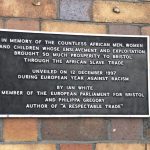The snowdrops are out so it must be Spring! Time to plan for the year ahead and to share some of the work that has kept me busy for the last year too. Although I’ve been hardly anywhere myself, the transformation of our lives online has brought me in direct contact with people and places in all the continents of the globe. I’ve been to conferences and lectures, attended performances and films and followed artists’ lives via my little 14”screen in my small study – the virtual world is a life saver!
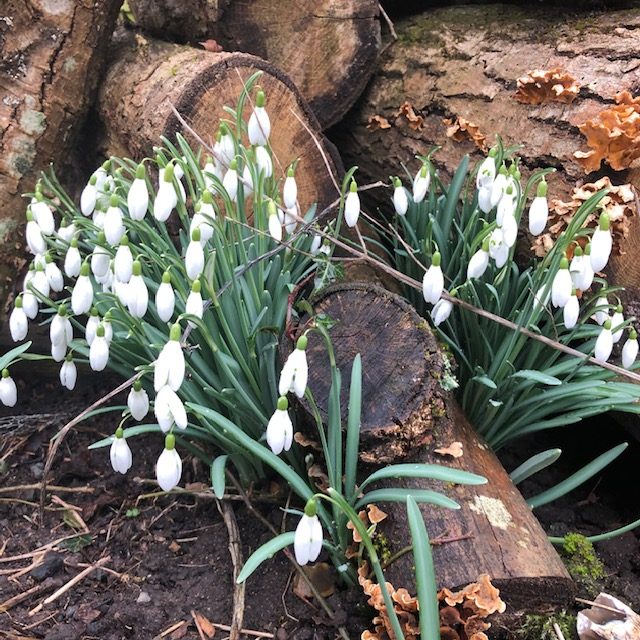
Snowdrops in the log pile March 2021
It is also inspiration for the Newsletter I edit every 3 months for the group of 60 or so glass artists in the UK, who are members of JustGlass. I’ve also been the very happy purchaser of numerous artworks via #artistssupportpledge. After a year in which I’ve completed a tapestry started in Crete in 1981, learned raku and got back into ceramics, it was time to do some glass! Beginning with my old love of painting and stained glass I’m making some sampler panels to submit for the BSMGP 30cm2 online exhibition. This year it is their 100th anniversary and I’ve been a member since 1997. I’ve not finished these yet as the entry deadline is not until 31 March but here is the first made using the glass samples painted on my course with Jonathan Cooke a couple of years ago in Swansea.
In 2021 the first exhibition I’m taking part in is the Contemporary Glass Society’s A Postcard From… the idea for the exhibitions comes from Alan J Poole – who amongst many other things is the editor of a monthly newsletter that keeps glass artists connected with what’s going on worldwide. Far more efficient than social media – just scroll through the document – then you can go and search for what you find online! I have been making glass postcards for quite a few years using home produced decals and glass painting recreating the sepia cards of the Victorian times. For this exhibition, however, I decided to make a postcard that reminded me of staying in a B&B by the seaside. The only time I ever eat a ‘full English’ breakfast is in a bed and breakfast guest house, which has to be worked off by a long walk by the sea. If you are lucky the tide is out and has left all those little ridges that squidge under your toes and after I’ve played duck drake lardy cake a few times with varying success (skimming flat stones on the surface of the sea) I start to slip one or two pebbles into my pocket as a memento of the day. After many decades when I can no longer remember where they’ve come from the pebbles are distributed around my garden to confuse future geologists or for others to find as keepsakes (note that I don’t take them from beaches where it says not to).
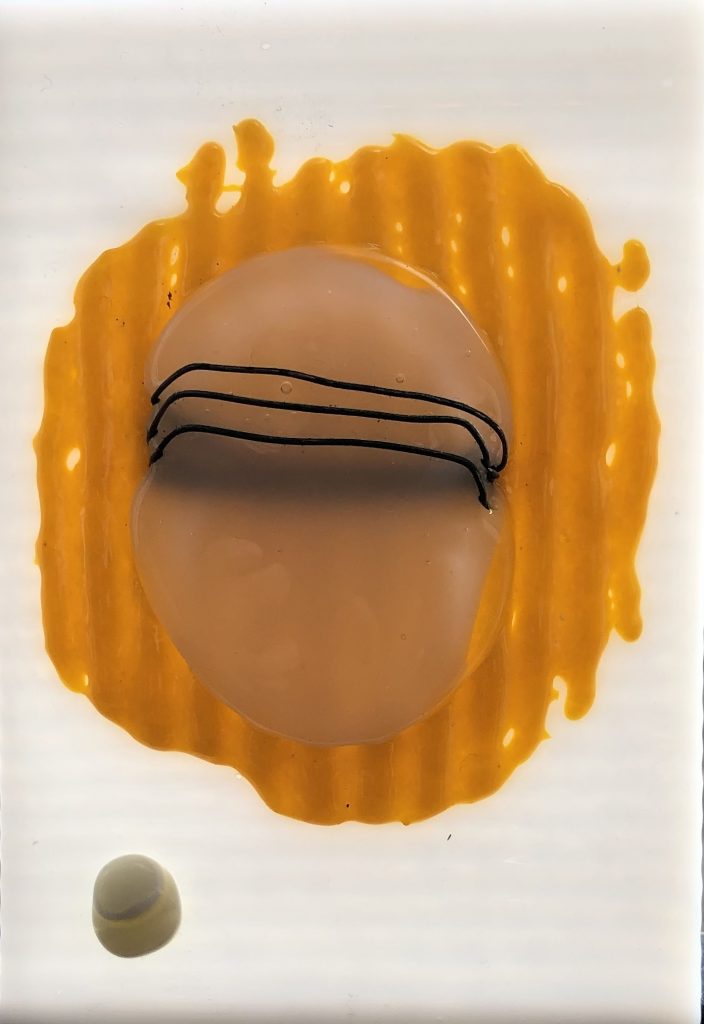
My Postcard is called ‘No Eggsplanation Needed’ (with thanks to my 1970s Kevin Ayers album for the inspiration). Over to you to continue making up puns…
Glass Postcard – fused slumped glass with inclusions 10 x 15cm (this and the other Postcards in the exhibition are for sale on the CGS website.
In the last week of June – 21st to the 27th 2021 I’m pleased to be taking part in Bucks Art Weeks again. I’ve missed it for the last 2 years but have otherwise been a part of this annual event since 2004 in various locations and with different artists. When I booked it I fully expected it to be online but serendipity falls on my side. It will be great to showcase my work and talk about it with some visitors as well as showing it online. My focus this year is on exhibiting my growing portfolio of work that memorialises memories and emotions associated with particular events, objects and people. There are some examples in my previous blogs. Each small ‘Memory Block’ sculpture is made with a rusty nail kiln fired into a textured block of clear Dartington glass. Affixed to the nail, with copper wire, is a memento which has some significance – the first bubble I made in glass blowing, a gifted ceramic object from a friend and so on. 2020 has been a tumultuous year and there are several Memory Blocks remembering events including the ‘Black Lives Matter’ movement. There are many stories to tell, not all personal to me, and once told they are contained within these signifiers as mementos and kept as a Memory Block. They aim to keep alive the memory and also celebrate those involved.
The CGS has announced two more online exhibitions for the year, and Just Glass also have plans. There is plenty to do and much to plan for but I do hope that many of the global online events will continue in future years. It will be amazing when we can gather again to meet up but I will treasure for ever the shared experiences with glass artists made possible by CGS’s weekly talks, Just Glass bi-monthly chats and the Glass Art Society’s conferences and meet ups – the glass community is a wonderful family to be a part of … #buildingastrongerglasscommunity
Instagram and Facebook : JaneVincentGlass
Twitter: AbbeyRiseStudio
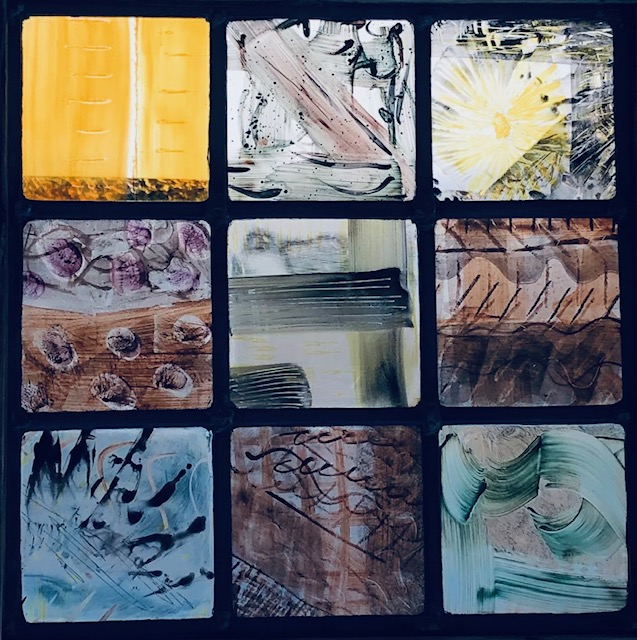
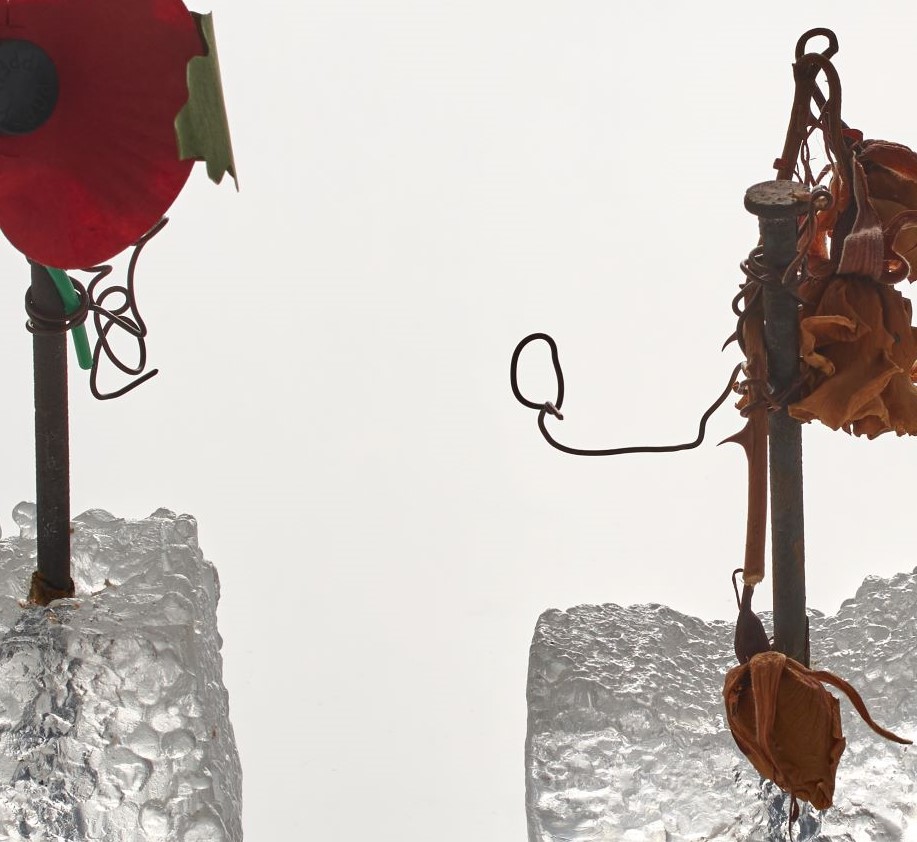

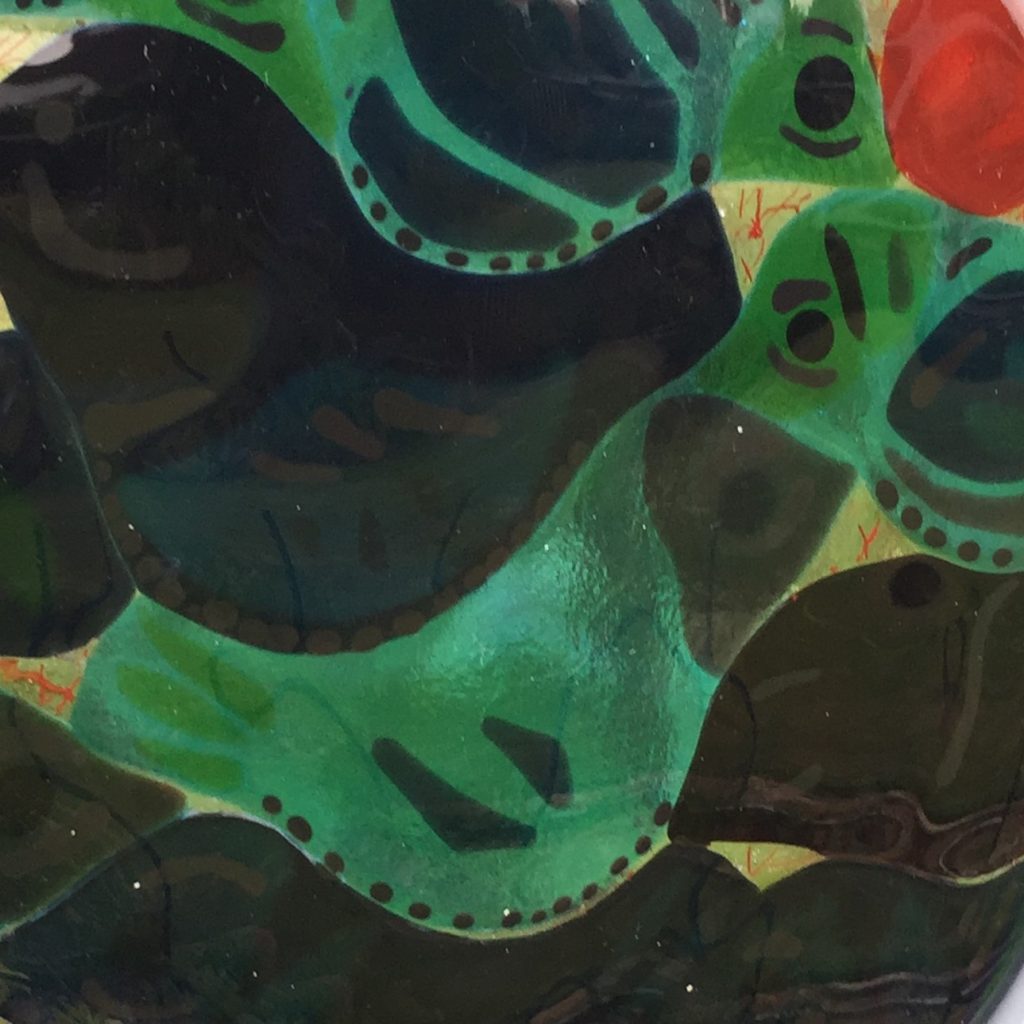


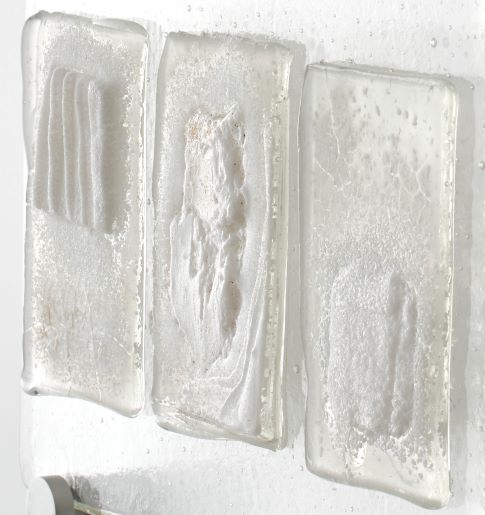

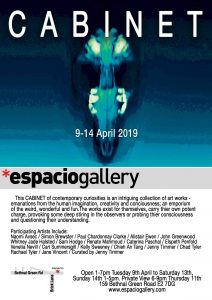
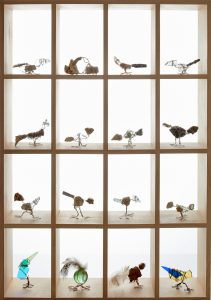
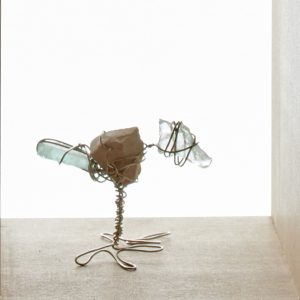
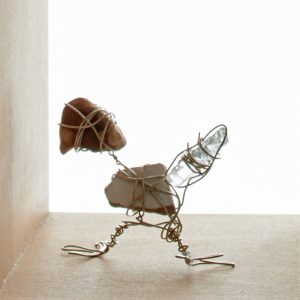
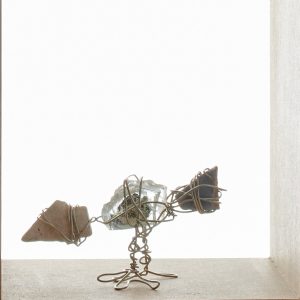


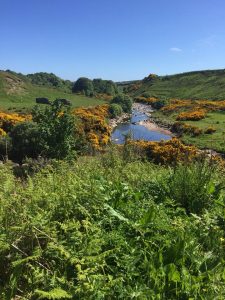
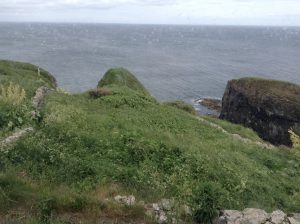 wonderful meals. Our visit to Latheronwheel for The Byre Project ‘Permeable Structures’ exhibition with exquisite work by Silvia Levenson, Emily Nachison, Michael Rogers and Karlyn Sutherland was very precious and special. Each day we presented a photo from the day before, such as these, that responded to our seeking stillness.
wonderful meals. Our visit to Latheronwheel for The Byre Project ‘Permeable Structures’ exhibition with exquisite work by Silvia Levenson, Emily Nachison, Michael Rogers and Karlyn Sutherland was very precious and special. Each day we presented a photo from the day before, such as these, that responded to our seeking stillness.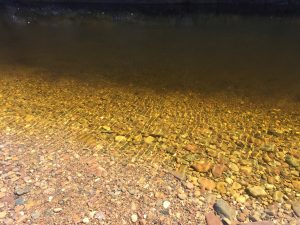
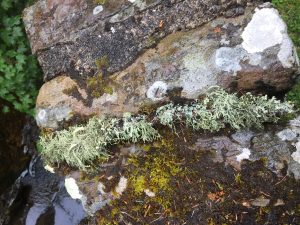
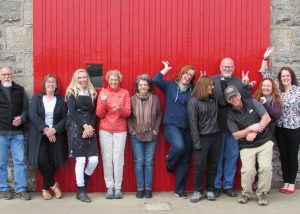 I came home brimming with ideas and a bag full of test pieces and kiln experiments and, thanks to Michael Boulton, some with glass painting. Later on, in the Autumn, at the Just Glass Seminar ‘Cut and Paste’ Amanda Simmonds told of how, 8 years on, she is still making new work from her time at Northlands with Steve and Richard – I certainly have enough to keep me inspired for many years to come.
I came home brimming with ideas and a bag full of test pieces and kiln experiments and, thanks to Michael Boulton, some with glass painting. Later on, in the Autumn, at the Just Glass Seminar ‘Cut and Paste’ Amanda Simmonds told of how, 8 years on, she is still making new work from her time at Northlands with Steve and Richard – I certainly have enough to keep me inspired for many years to come.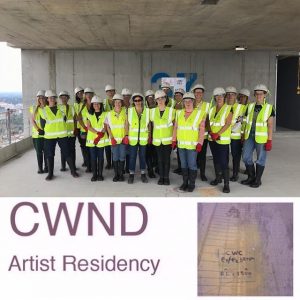 The adjacent circular tower will have 58 floors – about 27 had been built so we were able to look down on it. In contrast with my stay in Lybster where I could fall out of bed and be in the studio in 5 minutes, I had a daily 2hour commute to Canary Wharf which in 91F and no aircon on the Jubilee Line made for uncomfortable travel but it became part of the residency as I travelled among the smart suited city folk in my artist’s clobber. Our onsite workroom was windowless and in the basement 86 stairs down (at least not the 365 of Whaligoe) – but it was airconditioned – bliss! The CWND artist residency was a total contrast to Northlands. I was the only glass artist joining fine artists, sculptors, portrait painters, installation, sound and video artists, and ceramicists. Artists at different stages of their careers, some fresh from Wimbledon Art College and The Courthauld others studying at CAS or striking out in new directions. We had no studio facilities and no materials (apart from our own recording equipment and basic drawing materials) could be brought on site.
The adjacent circular tower will have 58 floors – about 27 had been built so we were able to look down on it. In contrast with my stay in Lybster where I could fall out of bed and be in the studio in 5 minutes, I had a daily 2hour commute to Canary Wharf which in 91F and no aircon on the Jubilee Line made for uncomfortable travel but it became part of the residency as I travelled among the smart suited city folk in my artist’s clobber. Our onsite workroom was windowless and in the basement 86 stairs down (at least not the 365 of Whaligoe) – but it was airconditioned – bliss! The CWND artist residency was a total contrast to Northlands. I was the only glass artist joining fine artists, sculptors, portrait painters, installation, sound and video artists, and ceramicists. Artists at different stages of their careers, some fresh from Wimbledon Art College and The Courthauld others studying at CAS or striking out in new directions. We had no studio facilities and no materials (apart from our own recording equipment and basic drawing materials) could be brought on site.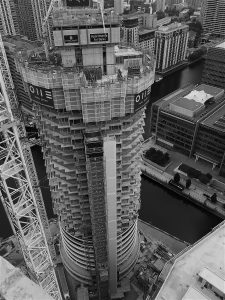 It was quite liberating. I met with the project manager responsible for cladding the towers – this included the glass, I walked about the site within the ‘blue zone’ and watched others at work, toured around the site on a boat and walked about the business district. Using found materials from site I experimented with reflection, squares in construction, and made some wire birds with stones, broken ceramic and glass found in the crushed rubble used on the paths.
It was quite liberating. I met with the project manager responsible for cladding the towers – this included the glass, I walked about the site within the ‘blue zone’ and watched others at work, toured around the site on a boat and walked about the business district. Using found materials from site I experimented with reflection, squares in construction, and made some wire birds with stones, broken ceramic and glass found in the crushed rubble used on the paths.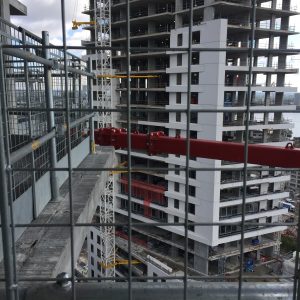 Thanks to Andrea Coltman who organised the residency with the Canary Wharf Development Corporation – this was her third year – we also had a series of workshops and lectures from artists, as well as a tour of the outside art with the Canary Wharf Estate Curator. An exhibition of Glass was on show in one of the buildings although it was disappointingly presented in smeared plexiglass boxes or in poorly lit areas – a bit of a contrast to when I’d see the same glass in other venues such as Messums, or the Biennale in Stourbridge.
Thanks to Andrea Coltman who organised the residency with the Canary Wharf Development Corporation – this was her third year – we also had a series of workshops and lectures from artists, as well as a tour of the outside art with the Canary Wharf Estate Curator. An exhibition of Glass was on show in one of the buildings although it was disappointingly presented in smeared plexiglass boxes or in poorly lit areas – a bit of a contrast to when I’d see the same glass in other venues such as Messums, or the Biennale in Stourbridge.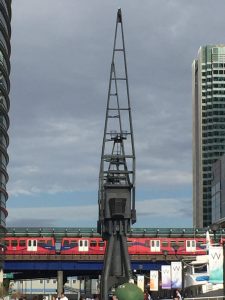
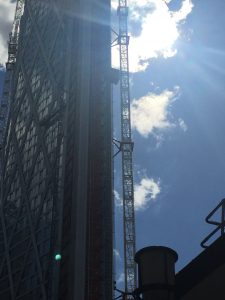 Any talk of Summer 2018 cannot pass without mention of the weather as it was hot, hot, hot for weeks. People said we had not experienced such heat and drought since 1976; I remember that Summer particularly well as the weather broke with great ferocity when I was on a campsite in Wales such that we had to shelter in a marquee from lightning strikes and rain. No such respite for 2018 although a couple of days of rain and overcast skies in Lybster were much appreciated to see a change in colours of the landscape which until then had been constantly bright in sun and cloudless skies. In London it was just hot but it’s breezy in the Docklands so we avoided the close humidity of the home counties. Now, writing this in early November, I’m wrapped in the warmth of one of Patti Nieman’s woollen scarves bought from her lovely workshop in Berriedale and Summer seems an age away. Now it’s time to plan for exhibitions of the work from the residencies and CWND will meet up in a couple of weeks to do just that.
Any talk of Summer 2018 cannot pass without mention of the weather as it was hot, hot, hot for weeks. People said we had not experienced such heat and drought since 1976; I remember that Summer particularly well as the weather broke with great ferocity when I was on a campsite in Wales such that we had to shelter in a marquee from lightning strikes and rain. No such respite for 2018 although a couple of days of rain and overcast skies in Lybster were much appreciated to see a change in colours of the landscape which until then had been constantly bright in sun and cloudless skies. In London it was just hot but it’s breezy in the Docklands so we avoided the close humidity of the home counties. Now, writing this in early November, I’m wrapped in the warmth of one of Patti Nieman’s woollen scarves bought from her lovely workshop in Berriedale and Summer seems an age away. Now it’s time to plan for exhibitions of the work from the residencies and CWND will meet up in a couple of weeks to do just that.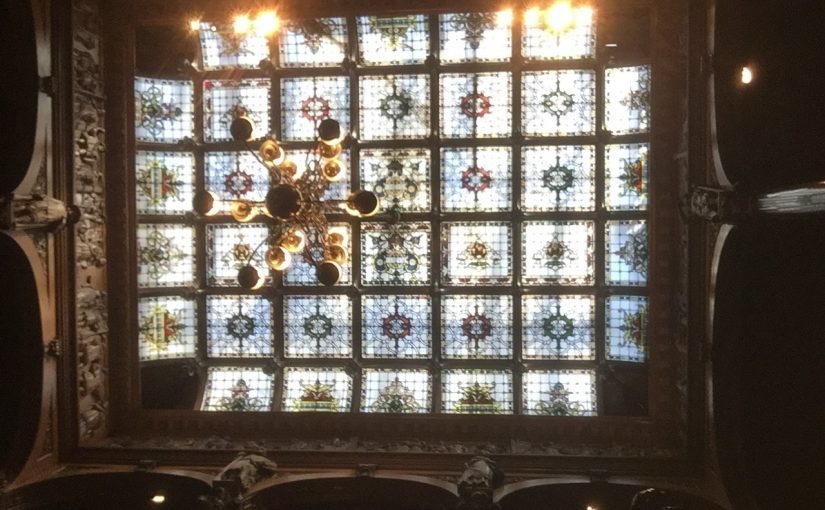
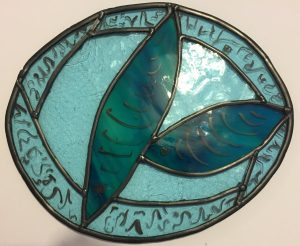
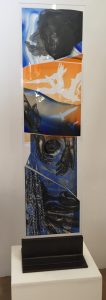 The Just Glass exhibition at Orleans House finished with a flourish in January (& my sculpture ‘I♥You’ has a new home) and at the end of February CGS’s ‘Glorious Glass’ opened in Taunton Somerset. The first of a series of linked regional exhibitions in Great Britain, organised under the leadership of CGS by artists local to the venue, ‘Glorious Glass’ reached out to a new audience from its CICCIC performance arts venue in St Paul Street. 24 artists, including myself, at varying stages of their glass artist careers showed their work. I exhibited two stained glass panels of fish on a plate which proved popular. It never ceases to amaze me just how versatile a medium glass can be. Cut, pulled, blown, printed, layered, moulded, dropped, dripped, glued, balanced, lit, fused, polished, blasted, painted, leaded, immersed, etched and more… but above all loved. There was something for everyone and I particularly liked Fabrizia Bazzo’s work (left) and Rachel Woodman’s exquisite coloured nuggets like little amulets that could nestle in your hand.
The Just Glass exhibition at Orleans House finished with a flourish in January (& my sculpture ‘I♥You’ has a new home) and at the end of February CGS’s ‘Glorious Glass’ opened in Taunton Somerset. The first of a series of linked regional exhibitions in Great Britain, organised under the leadership of CGS by artists local to the venue, ‘Glorious Glass’ reached out to a new audience from its CICCIC performance arts venue in St Paul Street. 24 artists, including myself, at varying stages of their glass artist careers showed their work. I exhibited two stained glass panels of fish on a plate which proved popular. It never ceases to amaze me just how versatile a medium glass can be. Cut, pulled, blown, printed, layered, moulded, dropped, dripped, glued, balanced, lit, fused, polished, blasted, painted, leaded, immersed, etched and more… but above all loved. There was something for everyone and I particularly liked Fabrizia Bazzo’s work (left) and Rachel Woodman’s exquisite coloured nuggets like little amulets that could nestle in your hand.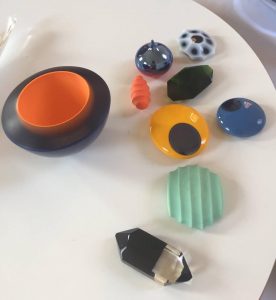
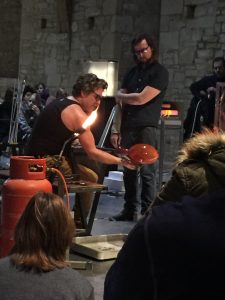
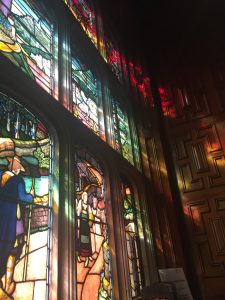 The final glassy day was spent with Jacque Pavlosky and Marilia Carvalho fellow artists in the Askett Glass Studio group. We first visited and scrutinised the exquisitely painted windows, Sunrise and Sunset, made by Clayton and Bell for 2 Temple Place c1895, where there is also a more traditional leaded roof light shown in the header above. Our walk to Glaziers Hall took us along the Thames Embankment and past the new wonders of London’s architecture on Blackfriars, Southwark and London Bridges – notable for the extensive use of reflective glass. Our day was rounded off by Professor Sarah Brown’s lecture on the East Window of York Minster – better to read her new book than I try to convey it all here.
The final glassy day was spent with Jacque Pavlosky and Marilia Carvalho fellow artists in the Askett Glass Studio group. We first visited and scrutinised the exquisitely painted windows, Sunrise and Sunset, made by Clayton and Bell for 2 Temple Place c1895, where there is also a more traditional leaded roof light shown in the header above. Our walk to Glaziers Hall took us along the Thames Embankment and past the new wonders of London’s architecture on Blackfriars, Southwark and London Bridges – notable for the extensive use of reflective glass. Our day was rounded off by Professor Sarah Brown’s lecture on the East Window of York Minster – better to read her new book than I try to convey it all here.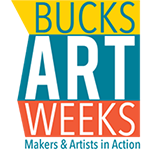
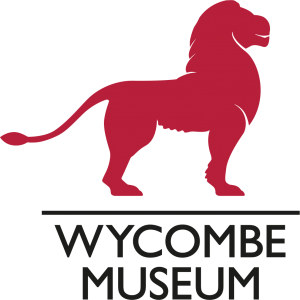
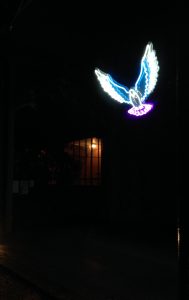 It’s a busy time of year – lots of opportunity to fill yourself to the brim with Christmas Fayre of all kinds. I headed off to Waddesdon Manor at the end of November (!) for their Christmas market and enjoyed chatting with Hazel Williams (hazelwilliams.net) about her laser cut designs in wood and perspex and then to Tony Davis (myvisibleobject.co.uk) about his laser cut metal sculptures – I’ve combined some from both into a Christmas mobile. Suzanne Raffellini had her lovely fused glass on show and all in all, what with a Christmas lunch in the restaurant, a tour of the decorated rooms in the House and then the truly spectacular light show at the end and I was ready for the festive month.
It’s a busy time of year – lots of opportunity to fill yourself to the brim with Christmas Fayre of all kinds. I headed off to Waddesdon Manor at the end of November (!) for their Christmas market and enjoyed chatting with Hazel Williams (hazelwilliams.net) about her laser cut designs in wood and perspex and then to Tony Davis (myvisibleobject.co.uk) about his laser cut metal sculptures – I’ve combined some from both into a Christmas mobile. Suzanne Raffellini had her lovely fused glass on show and all in all, what with a Christmas lunch in the restaurant, a tour of the decorated rooms in the House and then the truly spectacular light show at the end and I was ready for the festive month.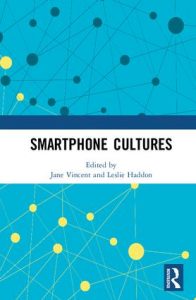 knowledge was published – jointly edited with Leslie Haddon. Our edited volume ‘Smartphone Cultures’ is all about the ways in which this mobile technology and its apps have been produced, represented, regulated and incorporated into everyday life – you can ‘look inside’ the book on Amazon…
knowledge was published – jointly edited with Leslie Haddon. Our edited volume ‘Smartphone Cultures’ is all about the ways in which this mobile technology and its apps have been produced, represented, regulated and incorporated into everyday life – you can ‘look inside’ the book on Amazon…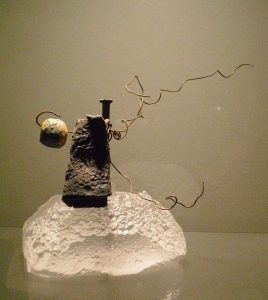 least this little sculpture ‘Marconi’. Back in 2009 I gave a guest lecture at Falmouth University for the Porthcurno Museum, famous for its connection with Marconi and his early experiments; later I found out that Marconi had lived in Cookham, Berkshire where, using a frying pan as part of his kit, he had tried out radio wave transmissions across the Thames to Hedsor. Now I have no idea how he did it, he was housesitting for his Uncle who was in jail, and of course left the UK under a cloud of insider trading and other accusations. Nevertheless, we cannot avoid the important role he played in the advancement of telephones and mobile phones and this little sculpture 22x13x13cm represents the memories of Marconi, the frying pan, the transmission insulators, the dark cloak of mystery that surrounds him and the radio waves that carried the messages. ‘Marconi’ is one of 4 small kiln formed and glass/wire & nail sculptures that I am showing in the Just Glass exhibition:
least this little sculpture ‘Marconi’. Back in 2009 I gave a guest lecture at Falmouth University for the Porthcurno Museum, famous for its connection with Marconi and his early experiments; later I found out that Marconi had lived in Cookham, Berkshire where, using a frying pan as part of his kit, he had tried out radio wave transmissions across the Thames to Hedsor. Now I have no idea how he did it, he was housesitting for his Uncle who was in jail, and of course left the UK under a cloud of insider trading and other accusations. Nevertheless, we cannot avoid the important role he played in the advancement of telephones and mobile phones and this little sculpture 22x13x13cm represents the memories of Marconi, the frying pan, the transmission insulators, the dark cloak of mystery that surrounds him and the radio waves that carried the messages. ‘Marconi’ is one of 4 small kiln formed and glass/wire & nail sculptures that I am showing in the Just Glass exhibition: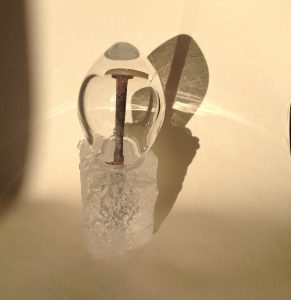
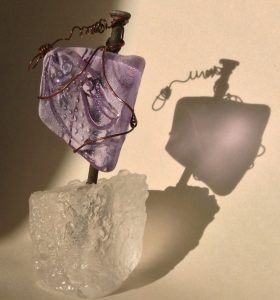
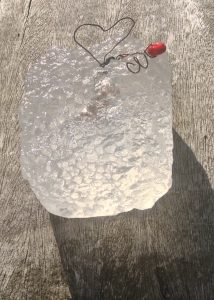 ‘I ♥ you’
‘I ♥ you’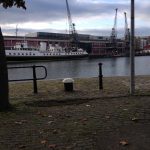
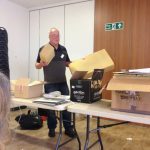
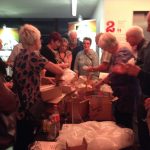 The Great Glass Drop got underway a little quicker than even the organisers expected as the boxes containing charity shop tumblers were enthusiastically chucked from the 2nd floor to the entrance hall below.The chuckers tried their best but in the end only a couple broke and there was more excitement surrounding the opening than for the drop.
The Great Glass Drop got underway a little quicker than even the organisers expected as the boxes containing charity shop tumblers were enthusiastically chucked from the 2nd floor to the entrance hall below.The chuckers tried their best but in the end only a couple broke and there was more excitement surrounding the opening than for the drop.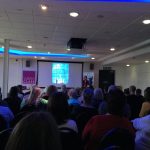 Sunday dawned a sunny day, Bristol was not really awake as we started with Martin Donlin’s exhilarating talk about his stained glass, which, to me, has something of Patrick Heron and Marc Chagall in it, and it is just wonderful. His work is on a huge scale and he has grown his skills with the available technologies, ruefully admitting to missing working in lead. Tales of working with hydrofluoric acid at college made us cringe and fear for his longevity but without that careless youth the bravura of his design may well have been lost. We liked that he stays true to the materials of stained glass seeking out makers of antique glass to achieve the desired effects.
Sunday dawned a sunny day, Bristol was not really awake as we started with Martin Donlin’s exhilarating talk about his stained glass, which, to me, has something of Patrick Heron and Marc Chagall in it, and it is just wonderful. His work is on a huge scale and he has grown his skills with the available technologies, ruefully admitting to missing working in lead. Tales of working with hydrofluoric acid at college made us cringe and fear for his longevity but without that careless youth the bravura of his design may well have been lost. We liked that he stays true to the materials of stained glass seeking out makers of antique glass to achieve the desired effects.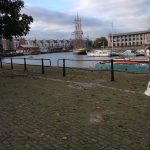 We continued the day at fast pace, not forgetting to spend time talking to the suppliers and buying from them – frames, glass, printing on glass, 3d printing with glass, new colours from bullseye and updates on spectrum and bullseye supply. Northlands the glass centre beyond Inverness was also there telling us about their opportunities.
We continued the day at fast pace, not forgetting to spend time talking to the suppliers and buying from them – frames, glass, printing on glass, 3d printing with glass, new colours from bullseye and updates on spectrum and bullseye supply. Northlands the glass centre beyond Inverness was also there telling us about their opportunities.